The Auto Union Type 52, The Most Powerful Car They’ve Never Built… Untill Now
A stunning hand-built pre-war Autobahn-cruiser packing a monstrous V16 engine!
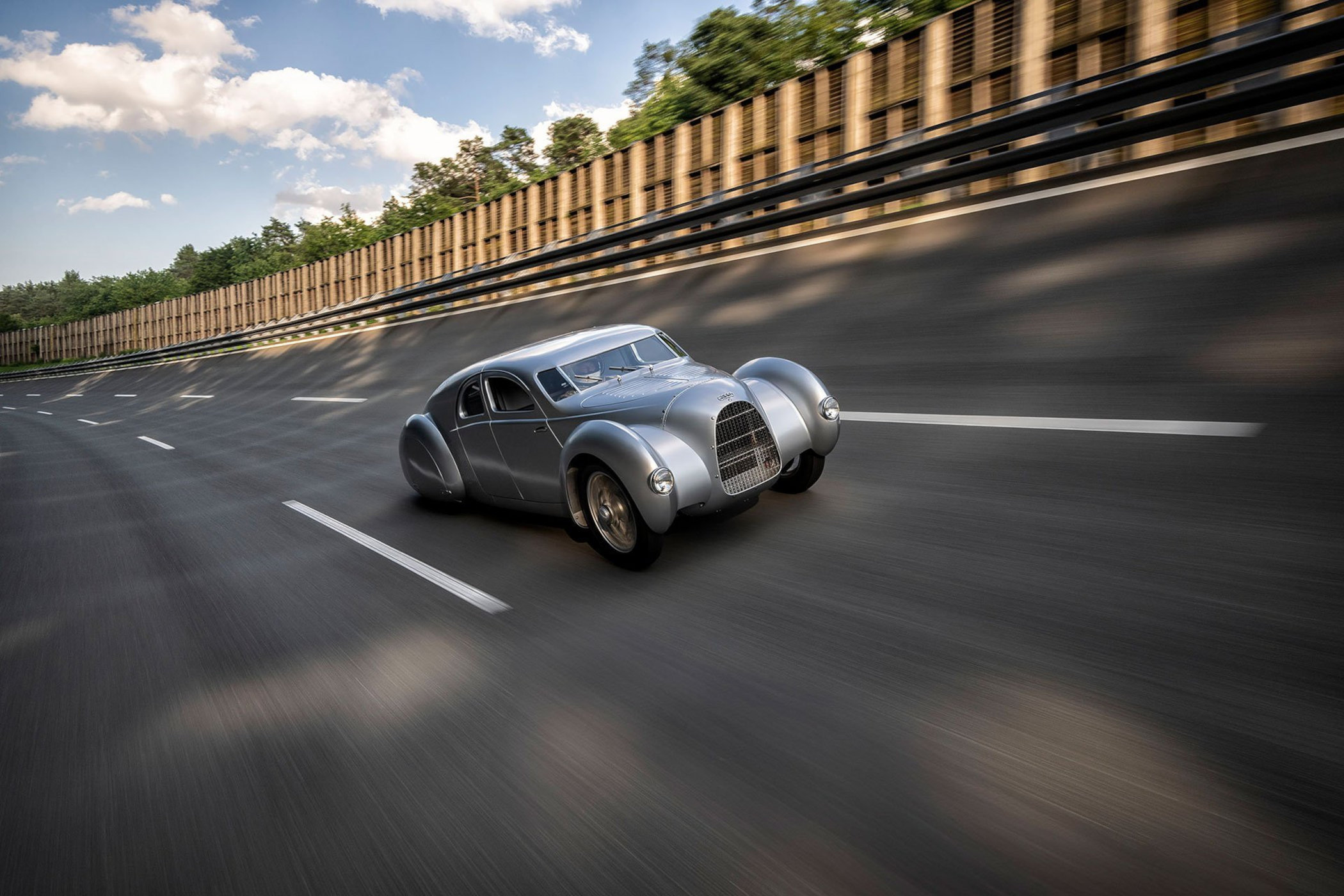
Ninety years in the making, Audi has done something extremely cool! They’ve taken a concept that was never brought to life and finally built it. It’s called the Auto Union Type 52 Schnellsportwagen, and it’s basically the wildest Autobahn cruiser you can ever imagine! It’s a bit of an exaggeration saying it was ’90 years in the making’ as they haven’t actually spent that long building the actual car. But, in reality, it has taken almost a century for the Type 52 to make it from an abandoned concept to an actual working and driving road car. The original idea for this, you ask? To create the most powerful, fastest and wildest sports car! And now, after all that time, they’ve just gone and built it!
If you’re not familiar with Auto Union’s rather complex origin story, here’s a quick history lesson before we dive into this fabulous machine. Auto Union is pretty much the coming together of several other German car manufacturers and the immediate predecessor of the Audi brand and company as we know it today. During the 1920s and 1930s, several companies were rolled into one, with Horch, DKW, Wanderer (all three owned by Zschopauer Motorenwerke J.S. Rasmussen) and Audi. Funnily enough, both Horch and Audi were founded by the same man; August Horch. He left his namesake company due to a fallout with his CFO and founded Audi in 1909. The outcome of all this, plus the involvement of several other subsidiaries and outside companies culminated in the foundation of Auto Union in 1932.
From very early on, the company, under the guidance of Klaus, Baron von Oertzen, was looking to make a name for itself. It would do so by getting involved in the state-sponsored motor racing programme, alongside Mercedes-Benz. And yes, it’s a fact that funding came from Adolf Hitler, then Germany’s Chancellor. With both brands fighting for dominance on the highest racing stage of the time, it was the perfect environment for some of the craziest racing machines, ever! From Type A through D, Auto Union brought the fight to Mercedes-Benz and pretty much dominated the mid-1930s.
Pre-war Grand Prix racing
As mentioned, Auto Union developed four different cars for the racing programme between 1934 and 1939; Type A, Type B, Type C and Type D. The first three cars used evolutions of a supercharged V16 specifically developed by Auto Union to go racing. Capacity ran between 5.0 and 6.0 litre, with power levels ranging from 320 to 520 horsepower. The cars were notoriously difficult to drive, often producing wheelspin at 160kph and over, but they were blisteringly quick! The Type D was fitted with a 3.0 litre V12 to comply with the new regulations for the 1938 Grand Prix season, making it a more balanced machine.
The primary stage for the cars was Grand Prix racing, basically the pre-war precursor to Formula 1. The rules were quite liberal, and speed increased hand over fist from year to year. During its relatively short-lived racing activities, Auto Union amassed a total of 25 wins (no 24-race-long seasons back then!). It cemented drivers like Bernd Rosemeyer, Tazio Nuvolari, Achille Varzi, Hans Stuck and Ernst von Delius as some of the greatest pilots of that era. Auto Union’s cars also competed in hill climbs and some were even fitted with highly streamlined bodies to chase multiple speed records. Bernd Rosemeyer for instance, clocked a top speed of 380kph (approx. 236mph) at the AVUS circuit in 1937, driving a streamlined Type C.
It’s believed only a couple of the original cars have survived, although several replicas have been built over the years, including a Type C Streamline by Audi. And now, roughly 90 years onwards, another one is added to this very rare group of cars, albeit with a bit of a different backstory!
A V16 legacy decades in the making
It’s both brand-spanking new and almost a century old; the Auto Union Type 52 Schnellsportwagen. It was originally proposed in the 1930s as a road-legal counterpart to the Grand Prix cars, using similar technology, just with a license plate slapped on it. Considering the fact Auto Union became a household name in Grand Prix racing back then, it makes sense to try to exploit that success by building a racing-car-derived road car. While Mercedes-Benz, locked in an arms race for racing dominance with Auto Union, opted for a front-engined layout, the Type A through D all had the engine in the back. And as it would happen, the proposed Type 52 road car would too!
Auto Union AG, in partnership with the Ferdinand Porsche design office, planned to take the racing cars to the road but also make them suitable to enter the Mille Miglia or even the 24 Hours of Le Mans. Racing was still very much in mind when developing the Type 52 Schnellsportwagen. Early in Auto Union’s days, several sketches were made and even technical plans were drawn up. For unknown (or undisclosed) reasons, the plans were abandoned in 1935, and the project was relegated to Auto Union’s and thus Audi’s archives ever since.
Until now that is, as Audi has just released the news of this amazing pre-war machine that never made it to fruition. It’s based on the same principle as the original plans, which would have used the ladder frame and supercharged V16 engine of the early Grand Prix cars. Power from the engine would be reduced by restricting the supercharger and compression of the engine, which meant it would produce about 200 horsepower. On paper that is, although it would have made the Type 52 one of the most powerful road cars of its day, and one of the fastest ones too, as calculations hint at top speeds in excess of 200kph.
Audi went above and beyond to build this car as close as it would have been built in the 1930s. The company commissioned specialists Crosthwaite & Gardner to build it using survived archive documents, plans and sketches, along with the notion to use traditional fabrication and construction methods as much as possible. That means wooden bucks, hand-beaten and -welded panels, wire wheels and so on. The driver sits in the middle, with a seat flanking either side of him/her. Behind that, an enlarged fuel tank is fitted, and a pair of spare wheels can be found. In the back, there’s a period-correct engine of course.
Pretty much the only departure from the original plans, and I think this is a brilliant one, is the engine. Audi decided to keep it on par with the Auto Union Type C Grand Prix racer, meaning it’s now of 6.0 litres of capacity and pumps out a monstrous 520bhp. Weighing in at 1,450 kilos and despite the fact no performance figures are mentioned, the Type 52 Schnellsportwagen will surely live up to its name! The car was presented at the Goodwood Festival of Speed this past weekend and I for one can’t wait to check the first in-depth video of this thing whenever it pops up on YouTube!
For more information, please visit Audi-Mediacenter.com.
Editorial note: The information and images sourced and used in this article are provided by and used with permission of Audi-Mediacenter.com and ClassicDriver.com.

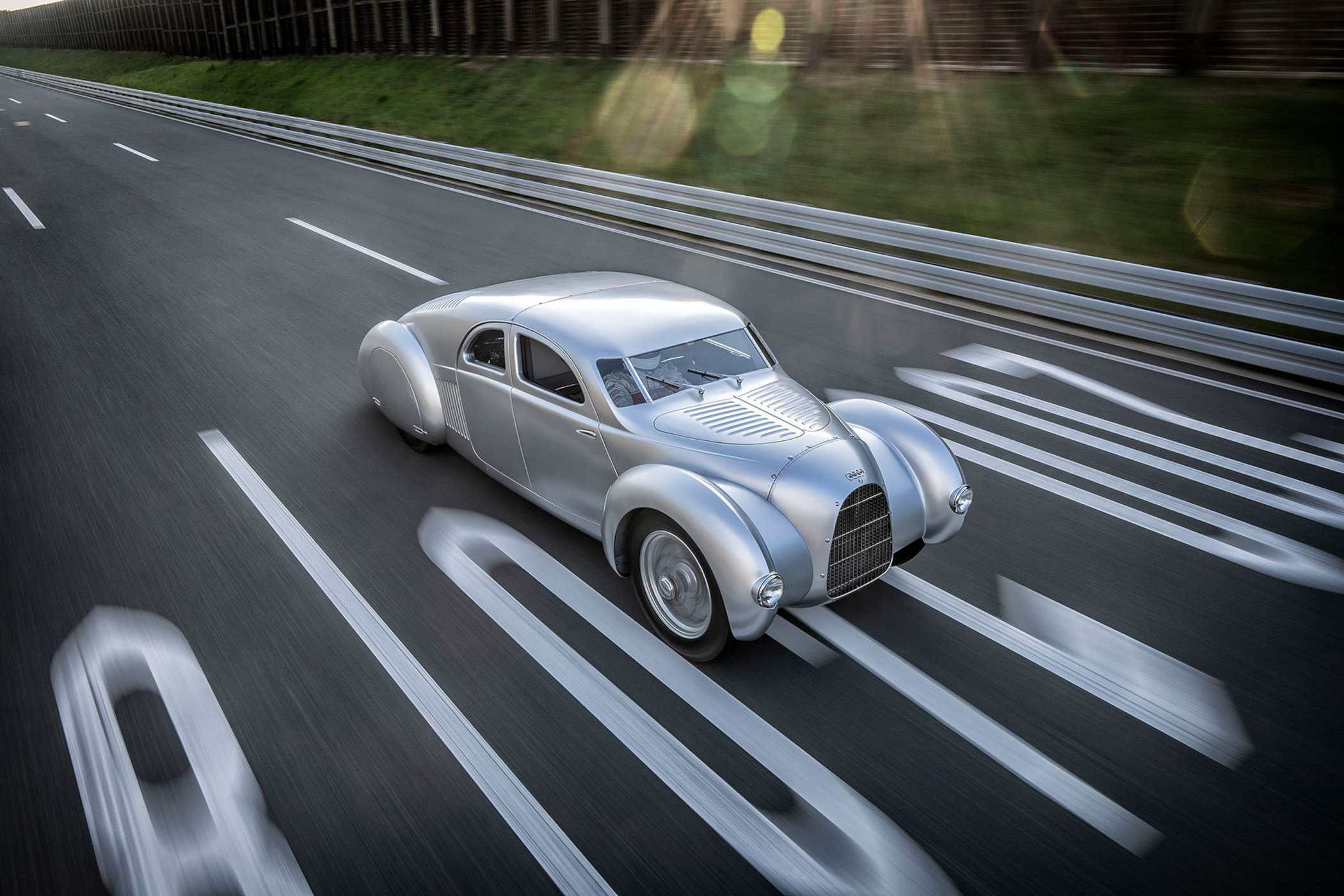

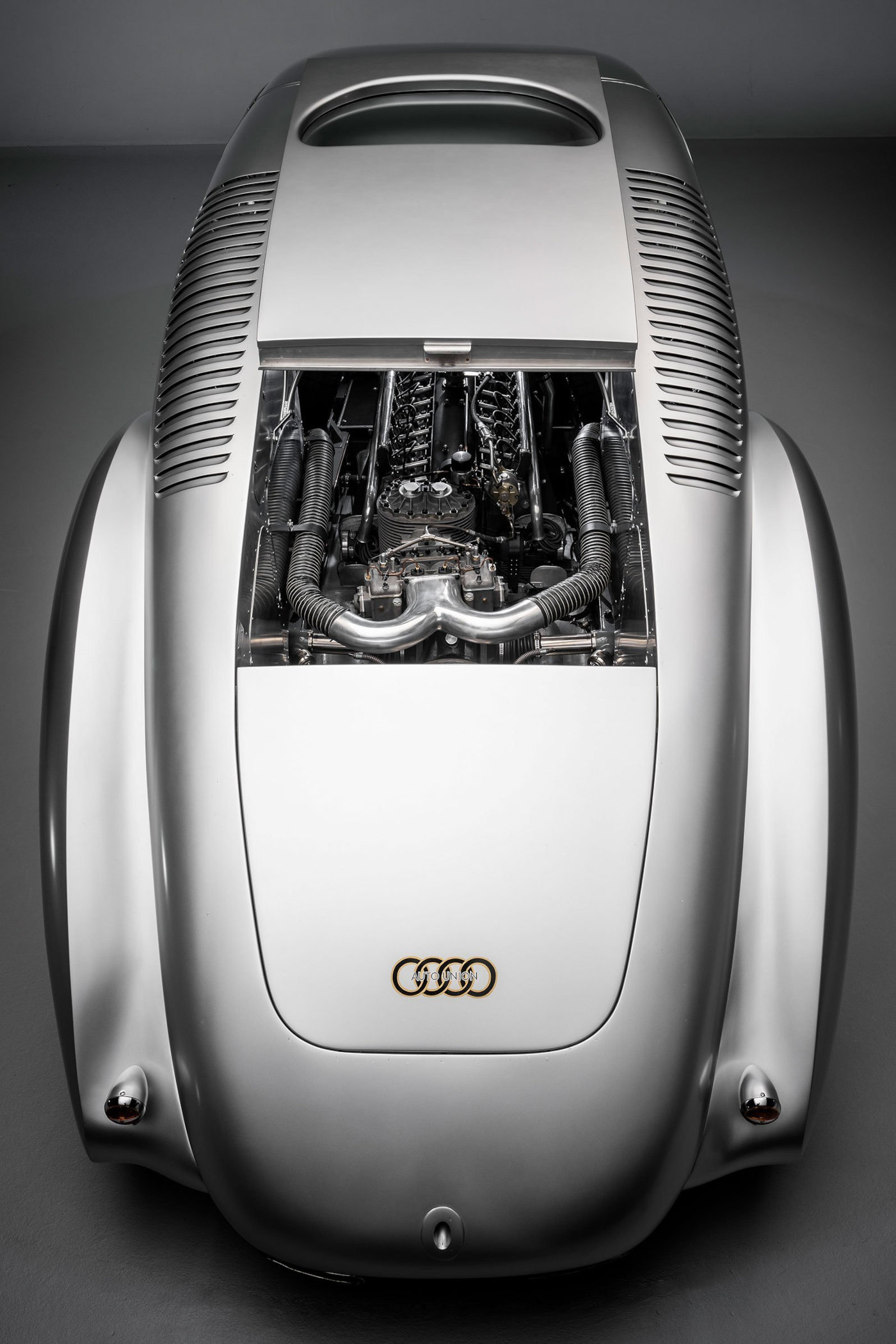
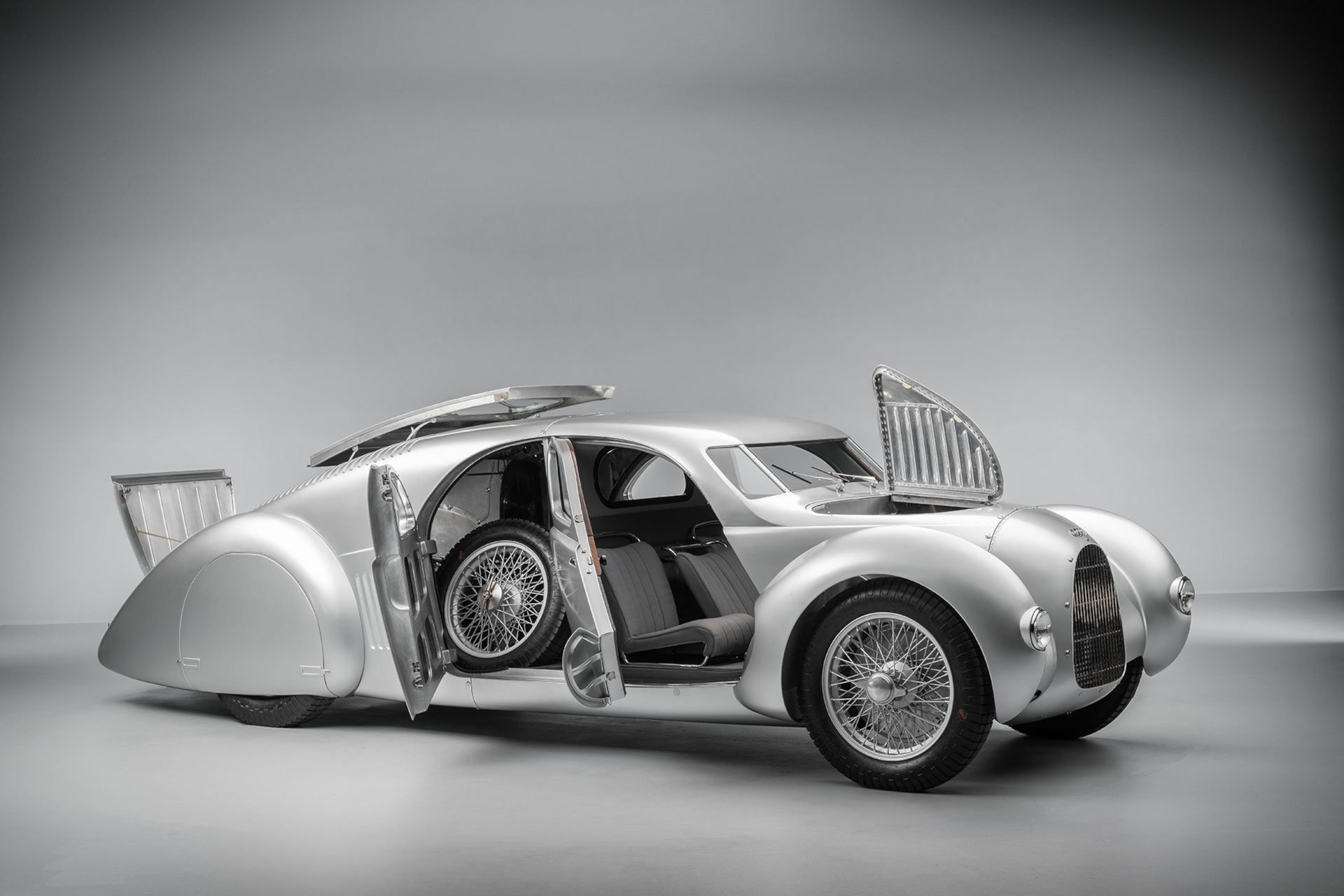



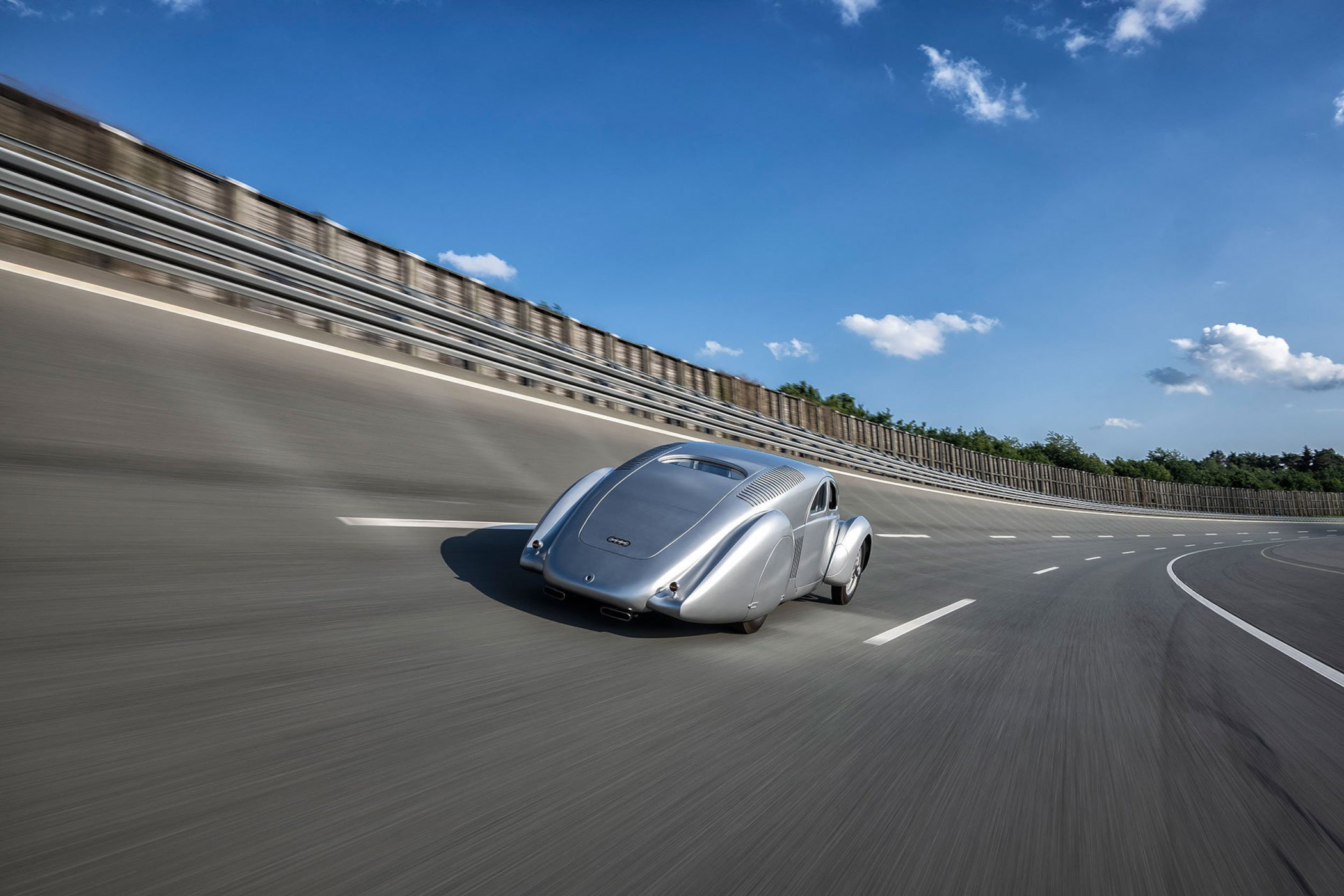
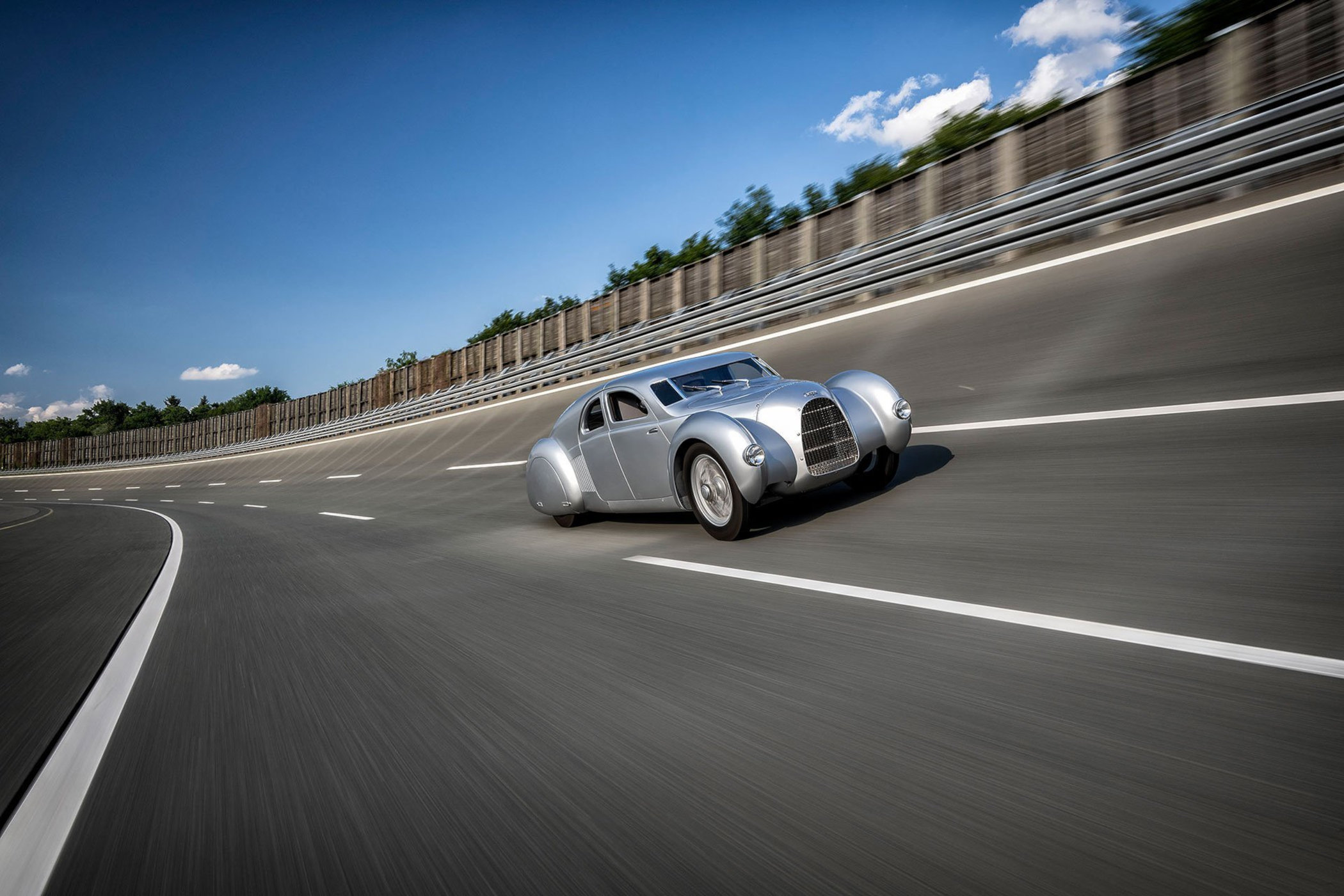
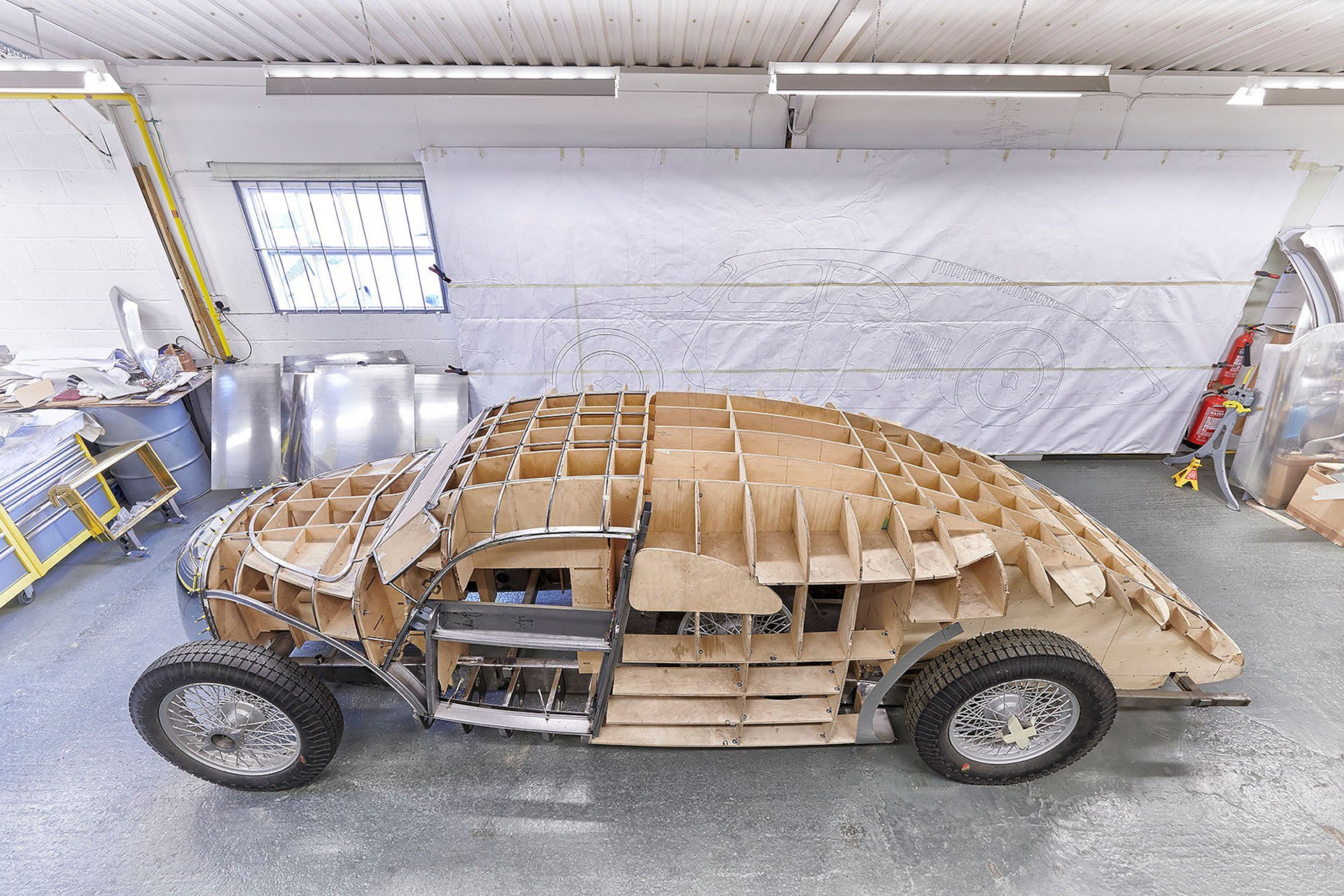
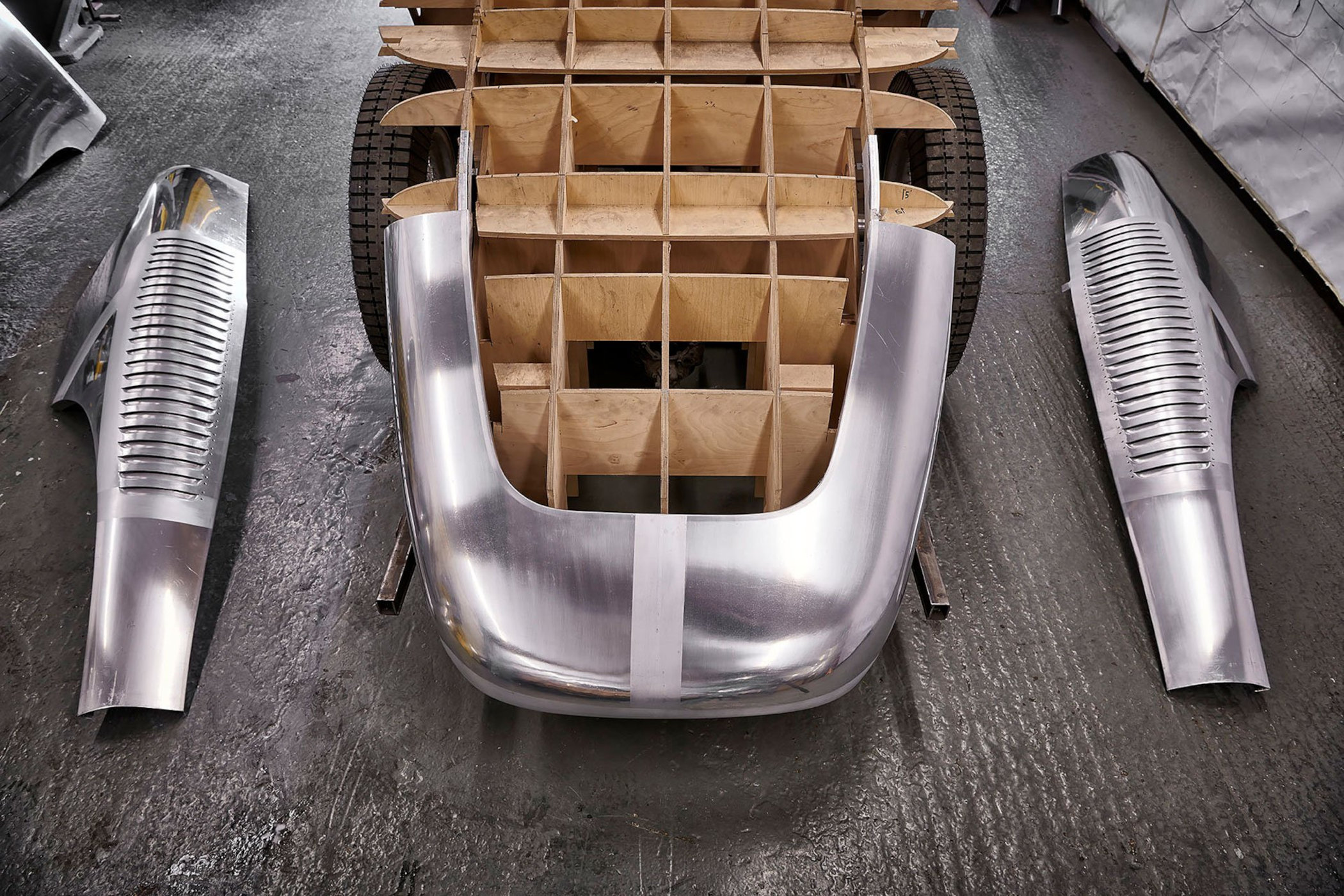
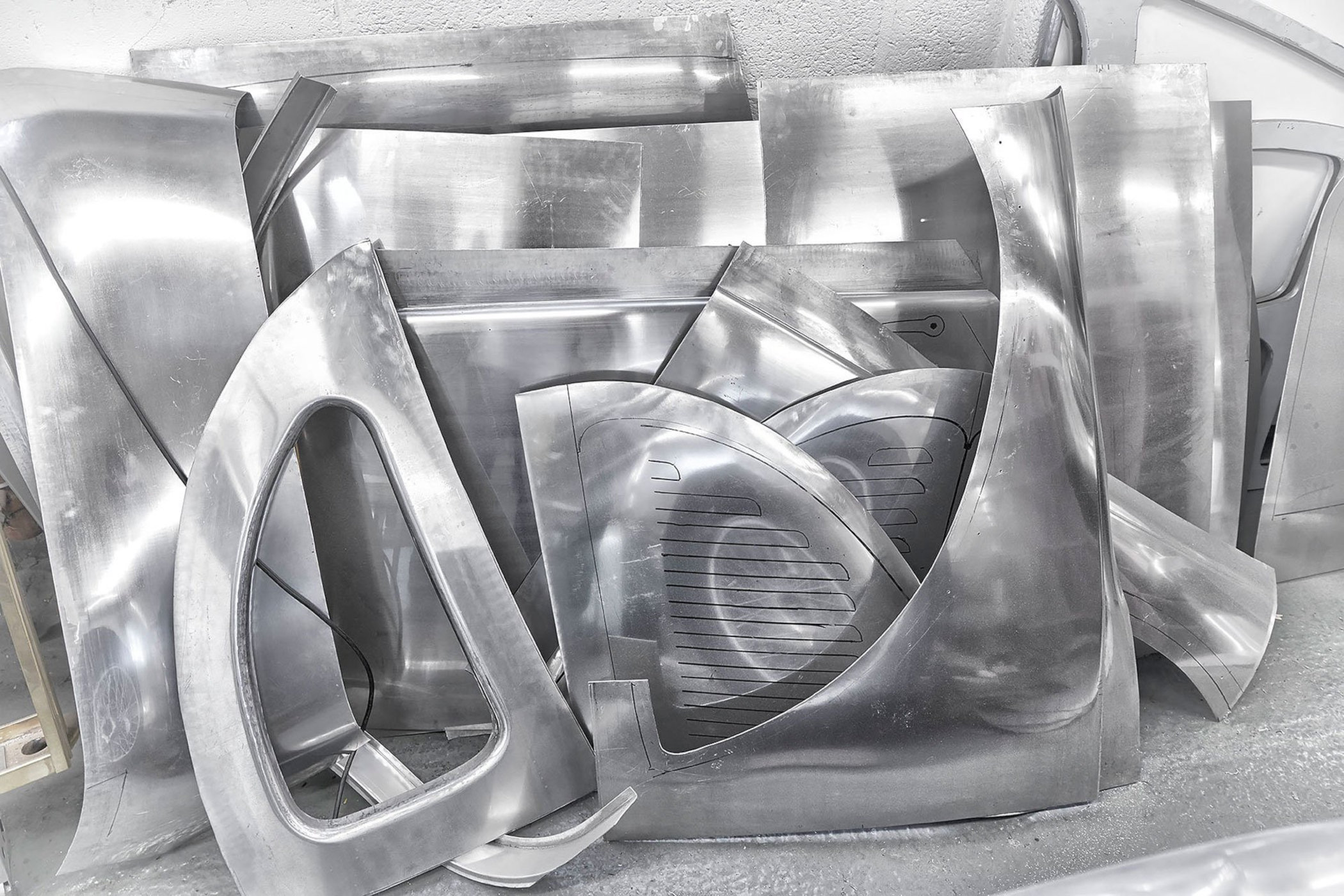




2 responses
Audi is the latin word for Horch. Therefore the founder could use his name again after leaving his epynominous Company.
Another car founder who had two separate makes of cars named after him. There was Ransom E. Olds with Oldsmobile & Reo, Henry J. Kaiser with Kaiser & Henry J, Harry Stutz with Stutz & HCS, Robert Hupp, Hupmobile & RCH, Edsel Ford, William Morris, Morris & MG, and there were others.